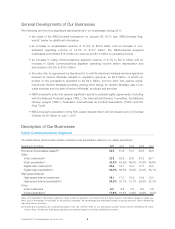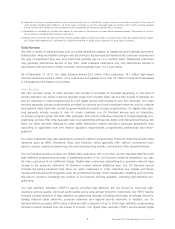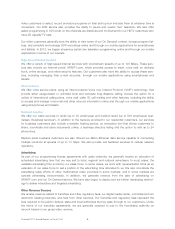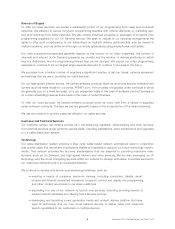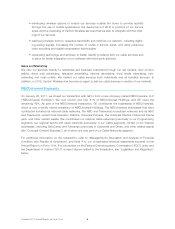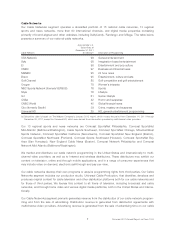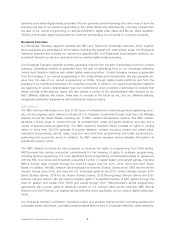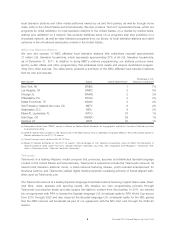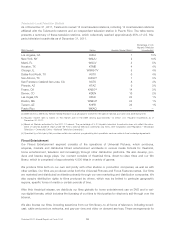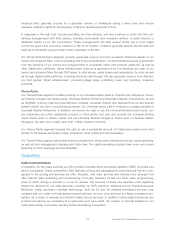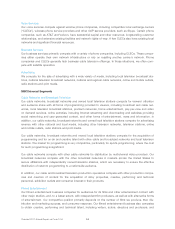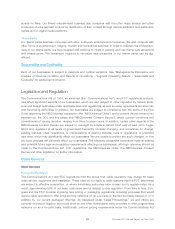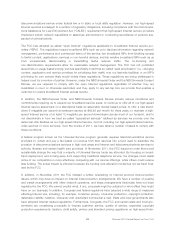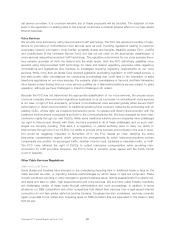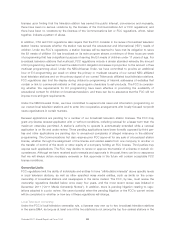Comcast 2011 Annual Report Download - page 14
Download and view the complete annual report
Please find page 14 of the 2011 Comcast annual report below. You can navigate through the pages in the report by either clicking on the pages listed below, or by using the keyword search tool below to find specific information within the annual report.Video Services
We compete with a number of different sources that provide news, sports, information and entertainment
programming to consumers, including:
• DBS providers that transmit satellite signals containing video programming and other
information to receiving dishes located on the customer’s premises
• certain phone companies that have built and continue to build fiber-optic-based networks
that provide cable services similar to ours, which now overlap a substantial portion of our
service areas
• other providers that build and operate wireline communications systems in the same
communities that we serve, including those operating as franchised cable operators
• satellite master antenna television (“SMATV”) systems that generally serve MDUs, office
complexes and residential developments
• online services and devices that offer Internet video streaming and distribution of movies,
television shows and other video programming
In recent years, Congress has enacted legislation and the FCC has adopted regulatory policies intended to
provide a favorable operating environment for existing competitors and for potential new competitors to our
cable services. The FCC adopted rules favoring new investment by certain phone companies in networks
capable of distributing video programming and rules allocating and auctioning spectrum for new wireless
services that may compete with our video service offerings. See “Legislation and Regulation” below for addi-
tional information.
Direct Broadcast Satellite Providers
According to recent government and industry reports, conventional medium-power and high-power satellites
provide video programming to 34 million subscribers in the United States. DBS providers with high-power
satellites typically offer video services substantially similar to our video services. Two companies, DIRECTV
and DISH Network, provide service to substantially all of these DBS subscribers. DBS providers also have
marketing arrangements with certain phone companies in which the DBS provider’s video services are sold
together with the phone company’s high-speed Internet and phone services.
Phone Companies
Certain phone companies, in particular AT&T, Verizon and CenturyLink, have built and are continuing to build
wireline fiber-optic-based networks, in some cases using Internet protocol technology, that provide video and
high-speed Internet services in substantial portions of our service areas. These and other phone companies
also may market DBS video services in certain areas where they provide only high-speed Internet and phone
service.
Other Wireline Providers
Federal law prohibits franchising authorities from unreasonably denying requests for additional franchises,
and it permits franchising authorities to operate cable systems. In addition to phone companies, various other
companies, including those that traditionally have not provided cable services and have substantial financial
resources (such as public utilities, including those that own some of the poles to which our cables are
attached), have obtained cable franchises and provide competing cable services. These and other cable sys-
tems offer cable services in some areas where we hold franchises. We anticipate that facilities-based
competitors may emerge in other franchise areas that we serve.
Comcast 2011 Annual Report on Form 10-K 12


